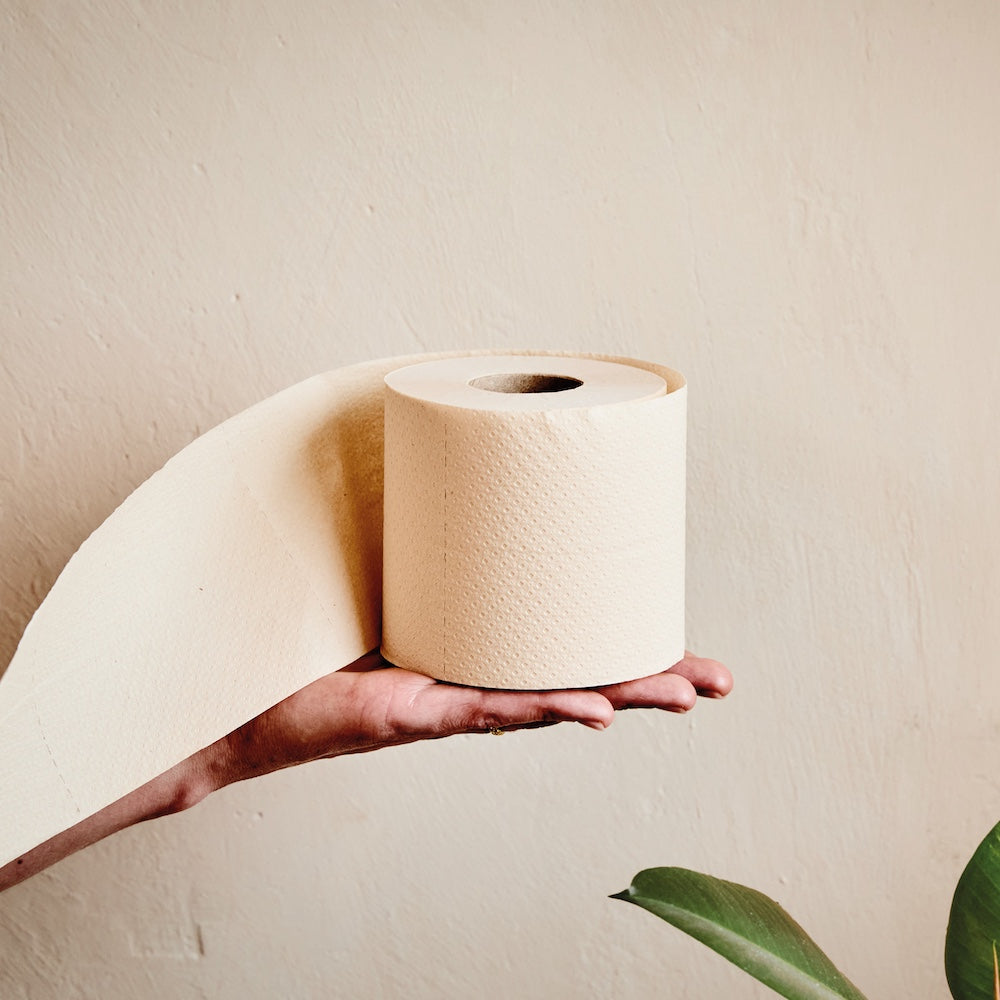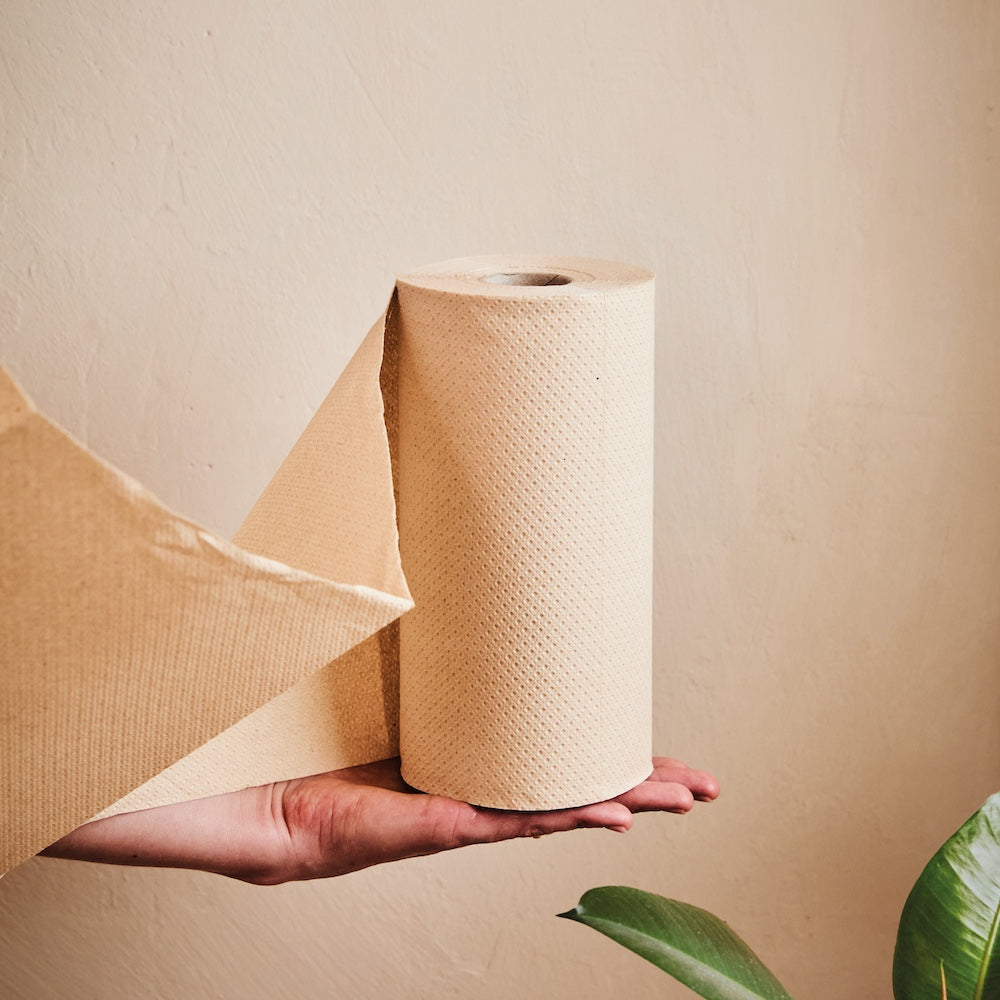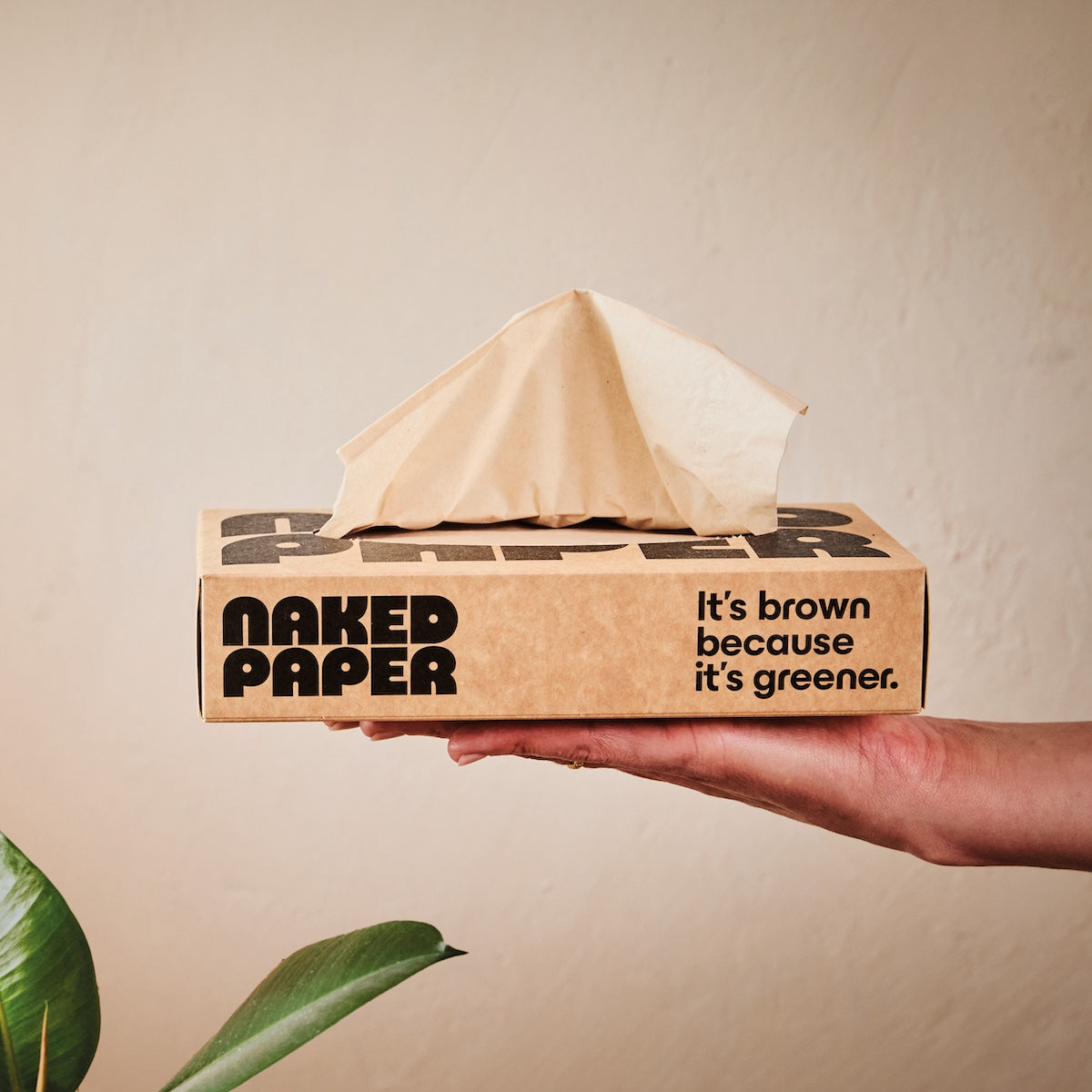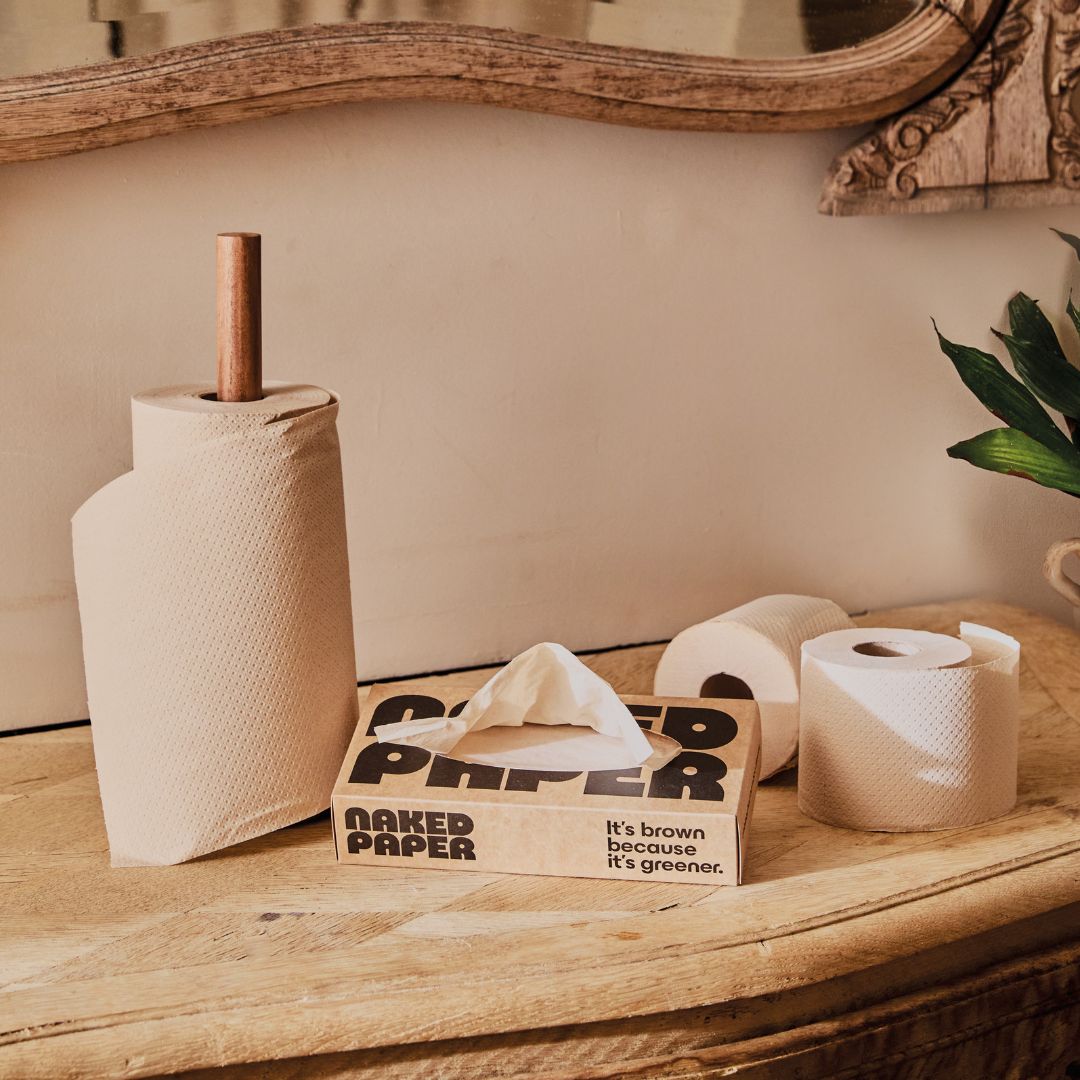Our footprint stage two: manufacturing
From root to roll, we're diving into the detail of our climate footprint* to show how we make toilet paper (and kitchen rolls, and tissues) with a much lower climate footprint than the standard.
Last time we covered our raw materials and their transport; how we make sure the emissions associated with our raw material supply are kept low, and how we include all of them in our footprint.
At this stage, all of the materials are at our factory, and it's time to make some Naked Paper!
Here's where we make the biggest breaks with traditional tissue manufacturing, manufacturing without fossil fuels to create tissue products with a far lower impact than the standard.

The standard way
Manufacturing is usually the most energy-hungry part of tissue making because sheets of tissues start out as sheets of wet pulp that have to be dried.
To dry the tissue, you need heat, and lots of it. Wet sheets of tissue pulp are blasted with intensely hot air – around 650°C – as they are wound into rolls.
Most tissue mills generate this heat by burning natural gas, a fossil fuel, in huge furnaces.
We don’t.
How we're different
🔥Heat – Our furnaces run on renewable biofuels that come from the area around our factory. These are twigs and leaves from regional forest-fire clearances, and biomethane from local sheep farms.
🌀Conservation – We conserve the heat we generate, using a patented system developed at our factory to recirculate heated air and boost its drying power.
⚡Electricity – The lights, computers, and machines at our factory are powered by renewable energy generated on-site; using solar panels, wind turbines, and hydroelectric generators.
This is what it looks like:

Manufacturing with heart
Our innovations from the standard way of making tissue means that the manufacturing stage makes up only a tiny sliver of our total CO2e footprint. Emissions from manufacturing Naked Paper are far less than bamboo, recycled, or virgin toilet rolls that are dried using fossil fuels.
We’re proving that the most energy-intensive parts of making everyday items don’t have to come with sky-high emissions. You just need to get creative about how you generate energy, and how you conserve it.
At this stage our lovely soft rolls of Naked Paper are waiting in boxes at the factory. We just need to get them to you.
In our next post we’ll join them on the last stage of the journey, all the way to your front door.
Want to try sun, wind, and twig powered toilet paper?

*Where do we get these numbers?
The numbers on our boxes and our website show our “CO₂e” per KG of product.
CO2e stands for carbon dioxide equivalents. This is a way to show the total amount of climate-changing gases that are released into the atmosphere as a result of making something; also known as our “emissions,” or “climate footprint.”
We’ve made our CO2e footprint public to normalise transparency around emissions and show that we are aware of the full climate impact of making Naked Paper.
We’re calling on other brands to do the same.
To measure our emissions, we commissioned an independent cradle-to-grave lifecycle analysis in line with ISO 14067 – the international standard for measuring and reporting a product’s climate footprint.
-
Figures for Naked Paper have been calculated by sustainability consultancy Inèdit, working closely with our factory to analyse every stage of production.
- Figures for standard virgin wood, bamboo, and recycled toilet paper sold in the UK have been calculated by Carbon Footprint Ltd. They used published data and known facts about typical industry supply chains.
Recent blog posts
-

2025 in toilet paper (and tissues, and kitchen roll...)
With bleach free toilet paper, kitchen rolls, and tissues sold in packs to suit the busiest households, we’re all about stocking up. And as 2025 draws to a close, it’s the perfect time to take stock as well; to pause a...
-

Discounted toilet paper when you refer a friend
Word of mouth has always been an important part of our story. Our bleach-free community is full of people who first tried Naked Paper toilet rolls, kitchen rolls, or tissues at work, or the home of someone they know. Without that...
-

Why we say "climate footprint" not "carbon footprint"
Our climate is changing as a result of the way people live, travel, and shop. And while everyone has a role to play in the transition to more sustainable ways of living, the bulk of the responsibility has to lie...







